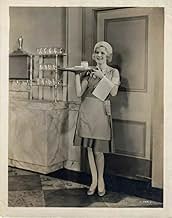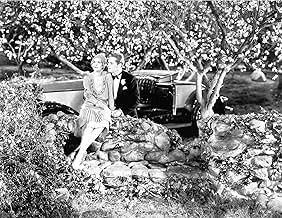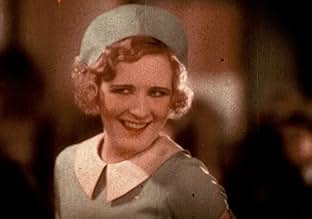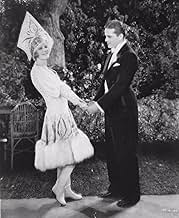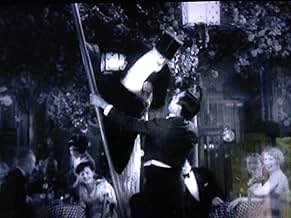Adicionar um enredo no seu idiomaSally was an orphan who got her name from the telephone exchange where she was abandoned as a baby. In the orphanage, she discovered the joy of dancing. Working as a waitress, she goes from ... Ler tudoSally was an orphan who got her name from the telephone exchange where she was abandoned as a baby. In the orphanage, she discovered the joy of dancing. Working as a waitress, she goes from job to job until she finds a job that also allows her to dance. At the restaurant, she mee... Ler tudoSally was an orphan who got her name from the telephone exchange where she was abandoned as a baby. In the orphanage, she discovered the joy of dancing. Working as a waitress, she goes from job to job until she finds a job that also allows her to dance. At the restaurant, she meets Blair and they fall for each other, but Blair is engaged to Marcia. Sally is hired to i... Ler tudo
- Direção
- Roteiristas
- Artistas
- Indicado a 1 Oscar
- 1 vitória e 1 indicação no total
- Undetermined Role
- (não creditado)
- Cafe Customer
- (não creditado)
- Chorus Girl
- (não creditado)
- Party Guest
- (não creditado)
- Cafe Customer
- (não creditado)
- Girls in dance number
- (não creditado)
Avaliações em destaque
A few years ago, Turner Entertainment released the remains of what's left of a primitive early talkie called SALLY. SALLY was a legendary stage show first produced by Ziegfeld in 1919, representing Miss Miller's greatest triumphs. In 1929, she was given the opportunity to preserve her performance in this oversized adaptation.
The entire film was shot and released in 2-color Technicolor, and this process apparently had the by-product of enhancing the range of the sound.
The film is undeniably dated. It lacks rhythm that later films would quickly master. What is thrilling and fascinating is to watch this great star, Marilyn Miller, in action. Her greatest asset was her dancing, though even that wobbly voice has its charms.
The film is in woeful need of restoration. That said, it is pretty much all there. Provided the viewer is able to make the leap of faith in understanding that it a technological dinosaur, you can settle in and luxuriate in witnessing something like an authentic classic Ziegfeld show.
This is the second of three films starring Miller, who was a huge star on Broadway in the 1920s as Ziegfeld Follies' lead actress. Miller only lived to be 37.
This film desperately needs to be restored. It could be a pretty good film. Although the story is pedestrian, some of the scenes are funny, although much of the humor is buried in poor sound quality. The film features early Vitaphone audio, which synchronized record albums with film. This can make restoration a particular challenge. The records were fragile and were only meant to be played a few times before they were replaced. If the discs are gone, what's left is whatever dub was made onto film long ago.
Supporting her is a very young Joe E Brown (best known as Captain Andy in the third film version of Show Boat) who is a lot of fun, and Alexander Gray, who like many other leading men of the early talkies is a bit of a stuffed shirt. You'll also spot the Keystone Kops' Ford Sterling as 'Pops'.
'Sally' is a hugely enjoyable early talkie. The colour sequence is lovely and bright - it is a pity that we lose the impact from the rest of the film. The songs are good and Miss Miller is a treat to watch. Try to catch this when it next airs on TCM.
Sally appears to be a bit dated, as we make our way through this new millennium, but serves as a tribute to the beauty and youth of Marilyn Miller. Miller is a fantastic dancer and gives the role 100%.
The film is hard to find, but worth watching if you locate it. Thanks to MGM/UA and Turner for finding the merit to release it on laser disc back in 1993.
In 1929 she made "Sally" for First National (forerunner of Warner Bros.) in which she recreated one of her stage triumphs. It is good and with some competent back-up supporting actors, but I would say it is an incomplete document if one is trying to 'discover' Marilyn Miller. The story is familiar, about a waitress looking for her big show biz break with a romantic side-story, and she shows her star appeal as a passable singer, a better actress and an even better dancer. She is pretty in a familiar sort of way, but she wins you over with her vivacious, cheerful demeanor.
The website rating is about right, and you get the feeling that being captured on film in an unremarkable story doesn't do her justice. I haven't seen her other films but I am reasonably certain that they do not capture the full impact of this legendary performer, either. I guess we'll just have to rely on historical sources and those three films.
Você sabia?
- CuriosidadesOriginally presented in 100% two-color Technicolor, at present the complete film survives only in black and white, with a singular musical number, "Wild Rose," in color.
- Citações
Otis Hooper: [to 'Connie', the waiter] I have 10 bucks - and only 10 bucks.
[opens the menu]
Otis Hooper: What would you suggest?
'Connie': Another restaurant.
- ConexõesFeatured in Broadway: The American Musical (2004)
- Trilhas sonorasSally
(1920) (uncredited)
Music by Jerome Kern
Lyrics by Clifford Grey
Played during the opening credits and often in the score
Sung by Alexander Gray and Chorus
Danced by Marilyn Miller and Joe E. Brown
Danced by Miller and Albertina Rasch Dancers at the follies
Principais escolhas
Detalhes
Bilheteria
- Orçamento
- US$ 647.000 (estimativa)
- Tempo de duração1 hora 43 minutos


